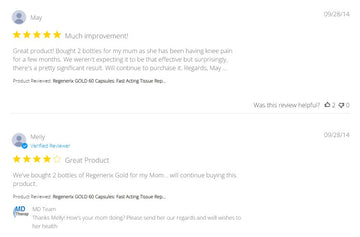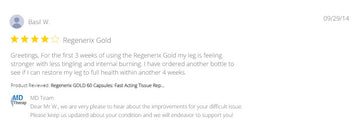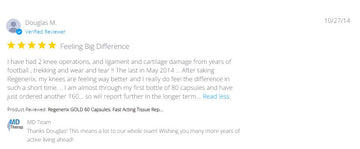Rowing Machine (Light, Range-Aware): Posterior-Chain Cardio That’s Kind to Knees—If You Set It Up Right
by MD therapeutics on Aug 17, 2025
Why light, range-aware rowing helps (the principles)
-
Low-impact, closed-chain rhythm: The flywheel provides smooth resistance without pounding, promoting synovial fluid movement for knee and hip comfort.
-
Posterior-chain strengthening: Rowing recruits glutes, hamstrings, lats, and spinal erectors—muscles that stabilize knees and hips during daily life.
-
Load you can dial in: Resistance (damper/drag) and stroke rate are fully adjustable, so you can train within a comfort window and progress gradually.
-
Range-aware knee angles: Limiting the catch to ~90° knee flexion (shins near vertical) reduces patellofemoral compression while still delivering cardio and strength stimulus—useful for knee OA or anterior knee pain.
-
Spine-smart hip hinge: Emphasizing hip hinge over lumbar flexion protects the low back: sequence legs → hips → arms on the drive; arms → hips → legs on the recovery.
Quick setup & technique
-
Damper/drag: Start low (damper 2–4).
-
Stroke rate: 20–24 spm, light to moderate effort.
-
Catch position: Tall torso, neutral spine, shins vertical (don’t jam the knees).
-
Drive order: Legs first, then swing from the hips, then arms.
-
Session start: 8–12 min, 3–4×/wk; add 2–4 min per session toward 20–30 min as tolerated.
Limits of exercise alone
-
Systemic drivers (sleep, stress, diet, metabolic health) aren’t solved by rowing.
-
Flares cap training load, creating stop-start progress.
-
Individual mechanics matter: Some need targeted hip/quad strength or mobility work and coaching on technique.
-
Tissues remodel slowly: Cartilage, tendons and fascia adapt over months—steady loading plus recovery and nutrition beats “exercise-only” plans.
Why pair your rowing with nutritional correction
-
Improve circulation: Support endothelial and microvascular function so tissues get oxygen and nutrients after sessions.
-
Promote repair: Provide structural inputs (e.g., collagen peptides, hyaluronic acid) that your training “signals” into connective tissues.
-
Reduce excessive inflammation: Keep the inflammatory response in a healthy range so you can train consistently.
-
Avoid tissue damage: Antioxidant and matrix-support nutrients can temper oxidative and catabolic stress from training.
Botanicals & nutrients commonly used for joint support
(Combines traditional lore with published research. Evidence ranges from promising to mixed; check interactions and personal suitability with your clinician.)
Ginger (Zingiber officinale)
-
Traditional: Ayurveda & East Asian medicine for circulation and “wind-damp” aches.
-
What studies suggest: Standardized ginger can offer modest symptom relief in osteoarthritis cohorts; results vary with dose and extract.
Turmeric / Curcumin (Curcuma longa)
-
Traditional: Core Ayurvedic spice for joint comfort.
-
What studies suggest: Bioavailability-enhanced curcumin extracts have shown reductions in knee-OA pain and improved function versus placebo.
-
Food reality: Culinary turmeric has low curcumin—hard to match study-like intakes via meals alone.
Boswellia / Frankincense (Boswellia serrata)
-
Traditional: Ayurveda’s shallaki resin for joints.
-
What studies suggest: Standardized extracts may improve pain and function in OA.
Winter Cherry / Ashwagandha (Withania somnifera)
-
Traditional: Adaptogen supporting resilience and musculoskeletal comfort.
-
What studies suggest: Trials report immunomodulatory effects and symptom support in knee-pain populations.
Collagen peptides (Type II emphasis)
-
Concept: Supply peptides that may support cartilage metabolism and tendon/ligament integrity—synergistic with rowing’s mechanical stimulus.
Hyaluronic Acid (oral)
-
Concept: Contributes to joint lubrication/viscosity; oral HA is used to support joint comfort and smooth motion.
Cat’s Claw (Uncaria spp.)
-
Traditional: Peruvian/Amazonian remedy for “rheumatism.”
-
What studies suggest: Placebo-controlled OA trials report short-term improvements in activity-related pain; evidence base remains limited/mixed.
The practicality problem
-
Food-only dosing is tough: Getting research-like intakes of turmeric/curcumin or ginger from meals every single day is impractical.
-
Pill burden & cost stack up: Buying six–seven separate products (ginger, turmeric, boswellia, ashwagandha, collagen, HA, cat’s claw) multiplies capsules and monthly spend versus one comprehensive formula.
A convenient all-in-one option: Regenerix Gold™
Prefer rowing + nutrition without juggling bottles?
-
What’s inside: Hydrolyzed Type II Collagen, Hyaluronic Acid, and a proprietary blend of Ginger, Turmeric, Frankincense (Boswellia), Cat’s Claw, and Winter Cherry (Ashwagandha)—the same seven ingredients discussed above—combined to promote healthy joint and muscle function and support everyday recovery.
-
Dosing: 2–3 capsules daily.
-
Price: $98 a bottle.
-
Why it fits here: One product covering seven evidence-linked ingredients is simpler—and typically more cost-effective—than buying 5–7 separate supplements.
-
Track record: Recommended by doctors and physical therapists internationally for about a decade (individual clinician views vary).
Supplements support healthy function; they don’t diagnose, treat, or cure disease. Check interactions (e.g., anticoagulants with turmeric/ginger/boswellia) and personal suitability with your clinician.
A simple rowing plan you can start this week
-
Week 1–2: 8–12 min, damper 2–4, 20–22 spm, shins vertical at catch, 3–4×/wk
-
Week 3–4: 15–20 min, 22–24 spm; add gentle 30–45 s cadence upticks if pain ≤3/10 and settles within 24 h
-
Support moves (2–3×/wk): Hip hinge drill, glute bridges, side-lying hip abduction, terminal knee extensions (band)
-
If soreness spikes: Reduce stroke rate/resistance by 20–30% and re-progress



